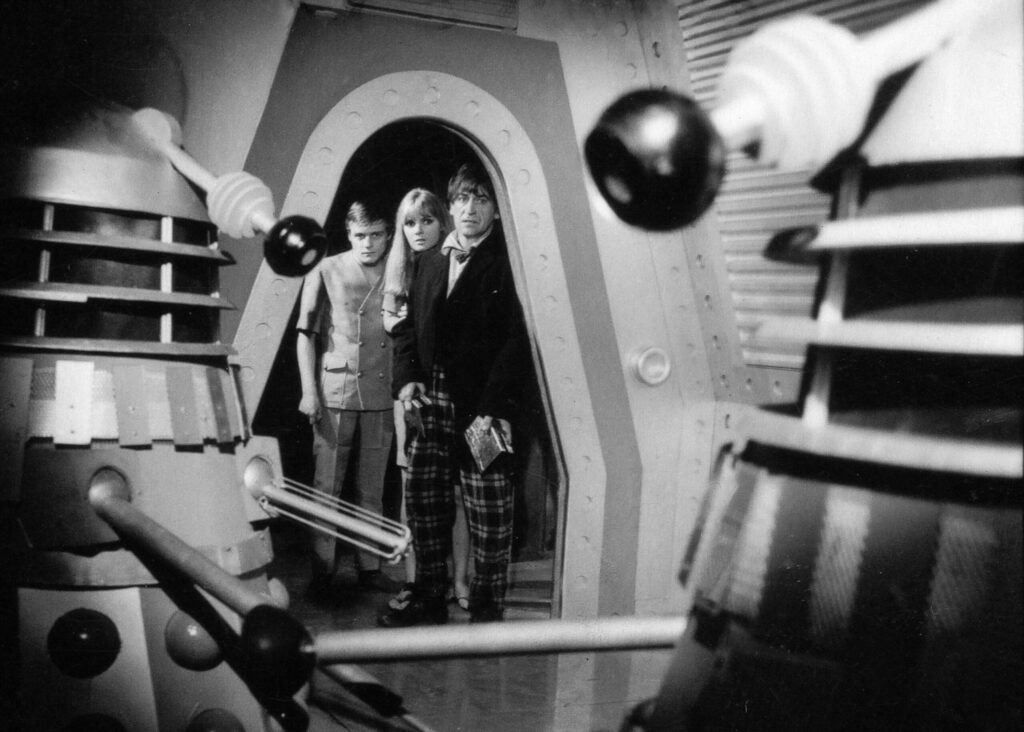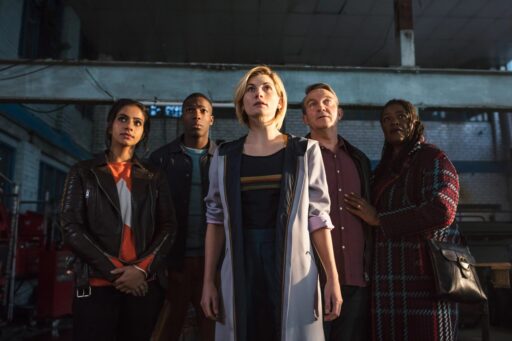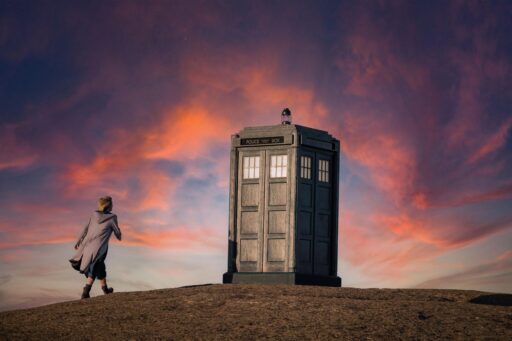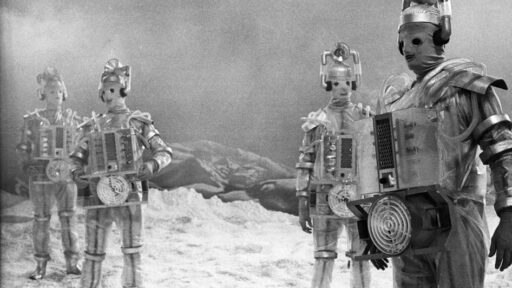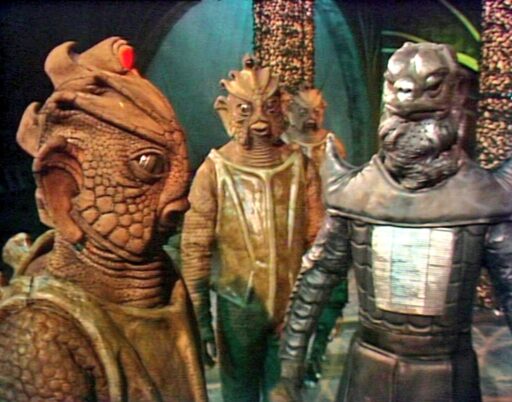In many ways The Power of the Daleks is a template for a lot of what follows, certainly for the 2nd Doctor, but also for the future of Doctor Who. On the one hand that speaks to how successful the story is at what it was trying to do, but on the other it can make a lot of it feel very familiar and predictable if you’ve watched a lot of later Who.
We’ll start with the obvious, there’s a new Doctor in town, well on Vulcan anyway. At this point the show didn’t know what a regeneration was and didn’t even call it that, and as a result there’s a lot of audience hand-holding going on here. Ben and Polly stand in for the viewer at home asking all the questions that might be going through people’s minds. To established fans it may feel like it’s over done but it was needed at the time.
I really like the way the Doctor initially reacts to the regeneration and how that is visually and audibly represented, I rather wish that was something we saw more of with future regenerations. What is much more commonly used is the confusion the Doctor shows but it’s done well here, without being too heavy handed. As we have come to expect (with only a handful of exceptions) by the end of the first couple of episodes the Doctor has largely settled down into his new persona.
From there we move on to a classic Base Under Siege scenario. This is something that would become synonymous with Troughton’s 2nd Doctor. It’s a format that has the advantage of being comparatively inexpensive while providing lots of opportunities for action and tension. Strictly speaking, while it’s not a format that was used with Hartnell, I think that The Tenth Planet is usually listed as the first Base Under Siege. However, I would probably argue that is not a pure base under siege formula because while the Doctor and his companions do spend all their time on a base, a significant part of the action occurs elsewhere.
In the case of The Power of the Daleks though, the focus stays resolutely on the Doctor and team and while other parts of Vulcan are briefly referred to we never see them at all or any characters in these other places. Instead almost everything happens in a handful of rooms and tunnels. That focus gives the story a claustrophobic feeling but that just works to its advantage as we see the Daleks slowly manipulate their way into a position of strength and the Doctor is seemingly unable to do anything about it.
And speaking of the Daleks they are at their absolute creepiest here. Hearing them repeat “I am your Ser…vant.” is far more threatening than endless cries of “Exterminate.” or “Seek. Locate. Destroy.”
This is the Daleks at their absolute cleverest. They start in a very weak position but gradually curry favor and pit the various factions against each other until they have become the dominant force on the planet. As I mentioned earlier, to the modern eye none of this seems particularly original including the fascist imagery of the human guards but up to this point the Daleks had more been brute force villains rather than clever ones. So this is the base under siege in its purest form and executed so effectively that it created a sub-genre.
It’s not the most original or challenging script but it distills Doctor Who down into an essence with remarkable effectiveness. The Daleks are chilling in this story, the Doctor and his companions feel like they are really under threat. The pacing is tight by the standards of 60s Who and for a 6 part story there is relatively little padding as the story moves forward with each episode.
I think a case could be made that this is the story more than any other which secured Doctor Who’s future and which cemented what the show would look like. People often talk about how Doctor Who can be anything it wants to be and that’s half true. It has the latitude to play in a lot of different times, places and genres but there are still some expectations that the audience has when it sits down to watch the show and most of them can be found in this story.
Discover more from Veristopia
Subscribe to get the latest posts sent to your email.


